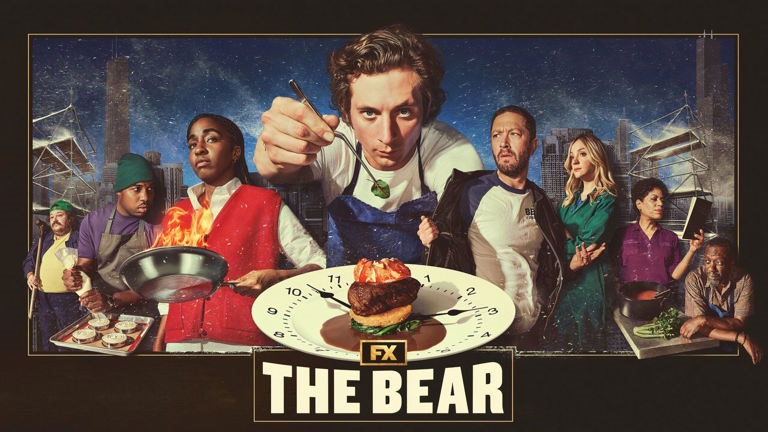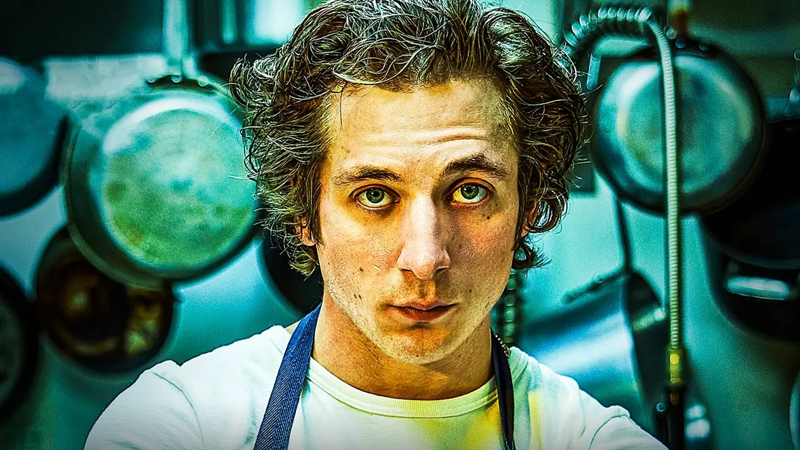In the third season of the critically acclaimed TV series, The Bear, audiences are treated to the emergence of an emotionally complex antagonist that has gripped viewers worldwide. This character, dubbed by fans and critics alike as the ‘Emotional Villain’, has breathed a new life into the narrative through his intricate, thought-provoking, and morally ambiguous actions. This character does not fit the conventional image of a standard TV antagonist.
Instead, his motivations are deeply rooted in his personal experiences, traumas, and a strong sense of justice that doesn’t always align with the societal norms. He manipulates not through brute force or cunning trickery, but by exploiting the emotional vulnerabilities of those around him. His actions and decisions, while often causing harm and chaos, are driven by a deep-seated belief in his cause. It’s this emotional depth and complex motivation that sets the ‘Emotional Villain’ apart from typical TV antagonists.
The viewers are torn between their natural instinct to despise him for the harm he inflicts, and their understanding and empathy towards his tortured soul. The writers of the show have done a remarkable job in creating a character who is not just a villain, but a deeply flawed individual whose actions resonate on an emotional level with the audience. This ‘Emotional Villain’ has become a defining feature of The Bear’s third season, establishing it as one of the most riveting TV dramas and setting a high bar for character development in the industry.
This new approach to narrative conflict, where the antagonist operates on an emotional level, has resulted in a captivating tension that keeps viewers glued to their screens. As the season progresses, the ‘Emotional Villain’ continues to challenge our perceptions of right and fair, forcing us to question our own moral compass. The Bear, in its third season, has clearly transcended the boundaries of conventional television storytelling, delivering a compelling emotional narrative that leaves viewers eagerly awaiting the next episode.
Introducing the New Villain: TV’s Most Compelling Emotional Antagonist
Unveiling an exciting new character in the world of television drama, the aptly named “Emotional Antagonist” is set to redefine the archetypal villain. This character is a master manipulator of emotions, using the subtleties of human interaction and psychological warfare to achieve their objectives. Unlike traditional villains who rely on physical force or overt coercion, the Emotional Antagonist thrives on the intricate dance of mental manipulation and control.
They don’t just produce fear and hatred, they generate a myriad of complex feelings, ranging from sympathy to confusion, making them an incredibly captivating character. Despite their underhanded tactics, audiences can’t help but be drawn to their complexity. Their wicked charm, coupled with their ability to play with sentiments, as if effortlessly conducting an orchestra of human emotions, makes them a highly compelling character. They are the kind of villain who can make viewers question their own moral compass, and even empathize with them, making them a game-changer in the realm of television drama.
The Emotional Antagonist is a new breed of villain, one that redefines what it means to be an antagonist. They are not just a character to be feared, but one to be studied and understood. Introducing them to the screen is a testament to the evolving sophistication of storytelling in television, where characters are not simply black and white, but a complex mix of shades that paint a more authentic, and ultimately more engaging, portrait of human nature and its inherent contradictions.

Evolution of Villainy: How the Character Has Evolved
The evolution of villainy in literature and pop culture has followed a fascinating trajectory, becoming increasingly complex and nuanced over the years. In the early stages of storytelling, villains were often one-dimensional characters, embodying pure malevolence with no redeeming qualities. Their sole purpose was to provide a stark contrast to the hero, making the protagonist’s triumph more significant. However, as storytelling evolved, so did the portrayal of villainy.
The modern villain is no longer an embodiment of pure evil but rather a complex character with their own motivations, backstory, and sometimes even a sense of morality. They are characters who have diverged from societal norms, not because of inherent depravity, but due to circumstances or personal convictions. This shift in portrayal has allowed for more compelling narratives, as audiences find themselves empathizing with, and at times even rooting for, the villain.
This evolution in villainy has added depth and realism to stories, reflecting the understanding that humanity exists in shades of grey rather than absolute black and white. In essence, the evolution of villainy has mirrored our increasing understanding of human nature – intricate, flawed, and multifaceted. With this evolution, villains have become as vital and compelling as the heroes they oppose, adding layers to the narrative and enriching the storytelling process.
Impact on the Plot: How the Villain Drives the Story Forward
The villain’s role in narrating the story cannot be underestimated as they are vital catalysts in driving the plot forward. Their actions and decisions significantly shape the course of the story by causing conflict, tension, and suspense, which are critical elements in creating an engaging narrative. The villain often presents a formidable challenge that the protagonist must overcome, thus igniting the protagonist’s transformation journey and fueling the plot’s advancement.
The villain’s motives and strategies can be complex and multifaceted, sometimes even sympathetic, prompting the audience to delve deeper into understanding their character. This exploration of character depth not only adds layers to the narrative but also serves to push the plot forward by introducing new storylines and plot twists. Without the villain’s provocation, the hero may remain static, and the storyline may lack the necessary drive to keep the audience engaged.
Whether the villain’s goals are personal, ideological or simply the product of their nature, they set the pace of the story, create intricate relationships with other characters, and ultimately shape the narrative’s climax and resolution. In essence, the villain’s impact on the plot is profound as they are the driving force that propels the story forward, stimulating character development and enriching the narrative with unexpected turns. The villain, therefore, plays an instrumental role in crafting a compelling storyline, underscoring the fact that a story’s depth and dynamism are as much a product of its antagonist as its protagonist.

Critical Acclaim: Reviews and Awards
Critical acclaim is a term frequently used within the artistic and entertainment industry, signifying a work or an artist that has received widespread positive recognition, often in the form of reviews and awards. Reviews are a critical element in the world of art, literature, film, music, and other creative fields, as they provide an expert’s perspective on the quality, relevance, and impact of a work. These critiques, often published in magazines, newspapers, or online platforms, are instrumental in shaping public opinion and can significantly influence a work’s commercial success.
On the other hand, awards represent formal recognition of excellence. They are often given by professional organizations and can drastically enhance an artist’s reputation, providing them with increased visibility and credibility within their respective industry. The winning of prestigious awards such as the Grammy, the Oscar, or the Pulitzer, can catapult an artist’s career, establishing them as a force to be reckoned with in their field. However, it is essential to remember that critical acclaim, both in terms of reviews and awards, is not always a reflection of commercial success.
Many critically acclaimed works do not always perform well at the box office or on the sales charts, and vice versa. The relationship between critical acclaim and commercial success is complex and multifaceted, often sparking debates on the true measurement of an artist’s success. Critical acclaim, through reviews and awards, can be seen as a validation of an artist’s craft, showcasing their ability to resonate with both experts and audiences, while also contributing significantly to the cultural landscape.

Fan Theories and Speculations: What the Future Holds
Fan theories and speculations are a fascinating aspect of popular culture. They offer an opportunity for audiences to delve deeper into the narratives of their beloved movies, books, TV shows, or video games and make predictions about what the future holds. This practice is not only a testament to the imaginative power of the human mind, but also reflects the intriguing complexities of contemporary storytelling. With the advent of social media and online forums, fan theories and speculations have flourished, becoming a global phenomenon that affects millions.
The future of fan theories and speculations seems to be increasingly tied to the expansion of digital media. With the advent of streaming platforms and the increasing popularity of serialized content, audiences now have more opportunities to dissect and discuss their favorite narratives. In addition, the proliferation of fan communities on social media has allowed for a greater exchange of ideas, fostering a more collaborative and interactive environment for speculation.
Furthermore, creators are now more aware of these fan theories and speculations and are often seen engaging with them. This interaction has changed the dynamic between creators and audiences, blurring the lines between fiction and reality. It has also led to the rise of meta-narratives, where fan theories are acknowledged and incorporated into the narrative itself. This signifies a shift in traditional storytelling, where the audience is no longer a passive recipient, but an active participant in the creation and evolution of the narrative.
In conclusion, the future of fan theories and speculations is unpredictable, yet undoubtedly exciting. Whether they are proven right or debunked, these theories reflect the passion and dedication of fans worldwide. As long as there are stories to be told and mysteries to be unraveled, fan theories and speculations will continue to thrive, shaping the future of narrative dynamics and audience engagement.
